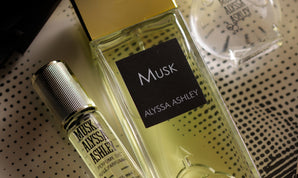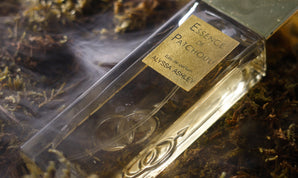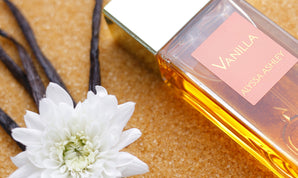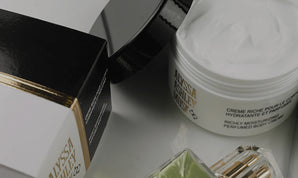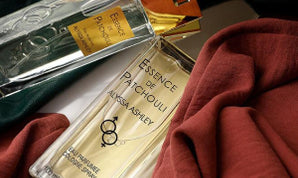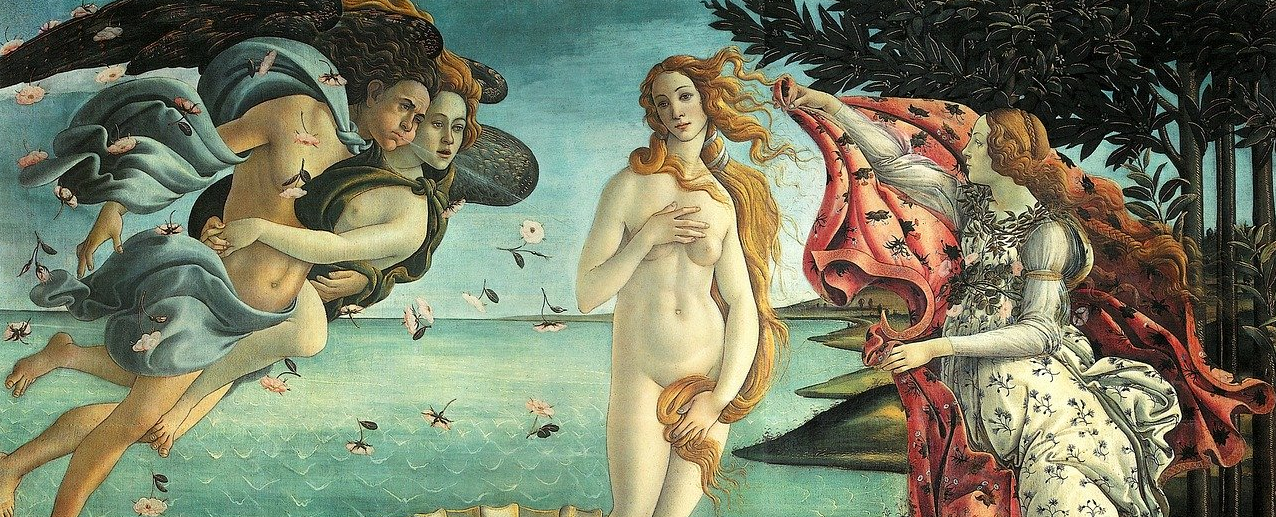Art, perfumery, painting, tangibility and intangibility of essences and concepts. I started this journey of rediscovery a while ago and in the meantime many have opened their eyes on this bond, which is strong but still partially explored.
The whole journey is aimed at tribute and celebration: celebrating perfume through art and vice versa, art through perfume. This way, objects, concepts and events are ennobled and defined according to a different objective: that of “beauty”.
The symbolism of the rose and the figure of Venus
In this atmosphere of tributes and appreciation I could not fail to pay homage to the product that is the emblem of the brand and somewhat also of the history of perfumery: Musk, my Musk. How is it linked to art? While choosing symbolic ingredients able to create new suggestions and parallelisms, I started with the Rose.
In the month of May, dedicated to this flower, I celebrated it at the same time as the natural world.
Discover the importance of the rose in perfumery in this article.
I wanted to go further, enclosing beauty and femininity in a jus by presenting my first perfume dedicated to a flower, or better to the flower par excellence.
The concepts of femininity, sensuality but also of simplicity and beauty have reminded me of their anthropomorphic incarnation: Venus. Is it just a coincidence that the rose is the flower most frequently associated with this divinity?
This deity has been celebrated, with different names, since the dawn of time along with the concepts associated with it: for the Phoenicians it was Astarte who ruled love and pain, birth and death; while the Greeks attributed to the goddess of love and beauty, Aphrodites, a benevolent and immense power; it was the Romans, however, who made Venus one of the most venerated deities of the pantheon.
All around the world, statues and paintings, but also installations and other artistic forms represent or are inspired by Venus. The most representative work, which is also the closest one to the new launch event is undoubtedly The Birth of Venus, by Sandro Botticelli. I’ll explain why right away!
The Birth of Venus and Rose Musk
Those elements that create a bond between the work of art of the florentine painter and my new Rose Musk fragrance have guided me to celebrate the former with a photograph that symbolically puts them together, by representing the aspects they share.

-
Coming into the world: The story narrated in the painting comes from Roman mythology and is adapted to renaissance customs and themes, as was typical in 15th and 16th century Italy.
The goddess was born from sea foam, perfect like a white pearl, laid down on a seashell, after the castration of another god, Uranus. From such a traumatic event beauty and love were born. Probably (there are no reliable sources) Botticelli was commissioned to paint this work by the Medici family, on the “commoner” side, to celebrate a birth, maybe of a little girl.
The arrival of a new member of the family inspired the client to think of this work of art and I felt the same inspiration to celebrate my new perfume!
This time it is not a paintbrush but a camera, that represents the fragrance as a new essence, that brings with it beauty and sensuality. Moreover, the birth of Venus in the Medici family, if interpreted as the birth of the Rose, represents the birth of the first perfume my brand has dedicated entirely to a flower. -
The Rose: the rose itself creates a bond between Botticelli’s painting and the perfume. In this image the complex essence of the rose becomes tangible and real. The painter intentionally showed the hiatus between inanimate objects such as water and trees in the background and the definition of the human figures.
Perspective gets entirely lost in the sea, so much so that, if we look at the lower part of the painting, it looks like an artificial backdrop. The trees too just have a symbolic value (oranges, citrus medica, are often used to represent the Medici family) and not at all physical, and have no real spatial collocation.
As a contrast with these elements, Venus’s body oozes with reality, and must have looked just like that of Simonetta Vespucci, the artist’s muse. And flowers too, along with the animate bodies, are represented in great detail, nearly mimicking botanical illustrations.
Bodies and flowers, therefore, share the same tangibility and become protagonists of the painting, along with the story. And the essence I have created is just like it, very human in its sensuality, but nearly otherworldly like Venus’s rose with its inebriating characteristics. -
Blue: The Birth of Venus measures 172 by 278 cm, and is, therefore, a very large painting. Apart from its extraordinary beauty, which has made it become one of the symbols of Italian art, it was another characteristic that made it special: the medium it was painted on. Usually, for paintings this size, in the 15th century painters preferred a wooden medium, in this case, the artist chose a canvas.
Choosing the canvas offered the artist the possibility to use a special type of priming: to the chalk that was used to make the background white and make colours come out naturally, he added a touch of blue, so the whole painting would be enveloped in a blueish air.
Why did the artist choose to do so? We are not sure but we can suppose that this colour wanted to confer importance to the painting itself. In the middle ages and later, together with the colour gold, blue paint (called ultramarine blue) was the most expensive colour to make and was used to paint the most important details of paintings (the veils of madonnas for example), the reason for this is that it was made by using a lapis lazuli powder, imported from the area that is now Iran, which was expensive and hard to find.
The colour blue, therefore, represents something special and unique. In my personal tribute to the work of art, the concept of the uniqueness of the fragrance is symbolised by a blue rose. The blue rose too is exceptional, inimitable and unreproducible as it doesn’t exist in nature.

How can we explain an idea by using words? Our senses and our memory lead us to known lands, where we can imagine only what we know. To narrate something new they may not be enough, that’s when external suggestions come to help us out, stimulated by works that are, by nature, very far from the world of perfumery.
And yet, this is how I imagined my new Rose Musk by Alyssa Ashley, born from the desire to celebrate Musk and from an olfactory inspiration. Embraced by a sensual floral fragrance of rose, like the Spring Hora’s cloak, as unique as the story of the birth of Venus.
